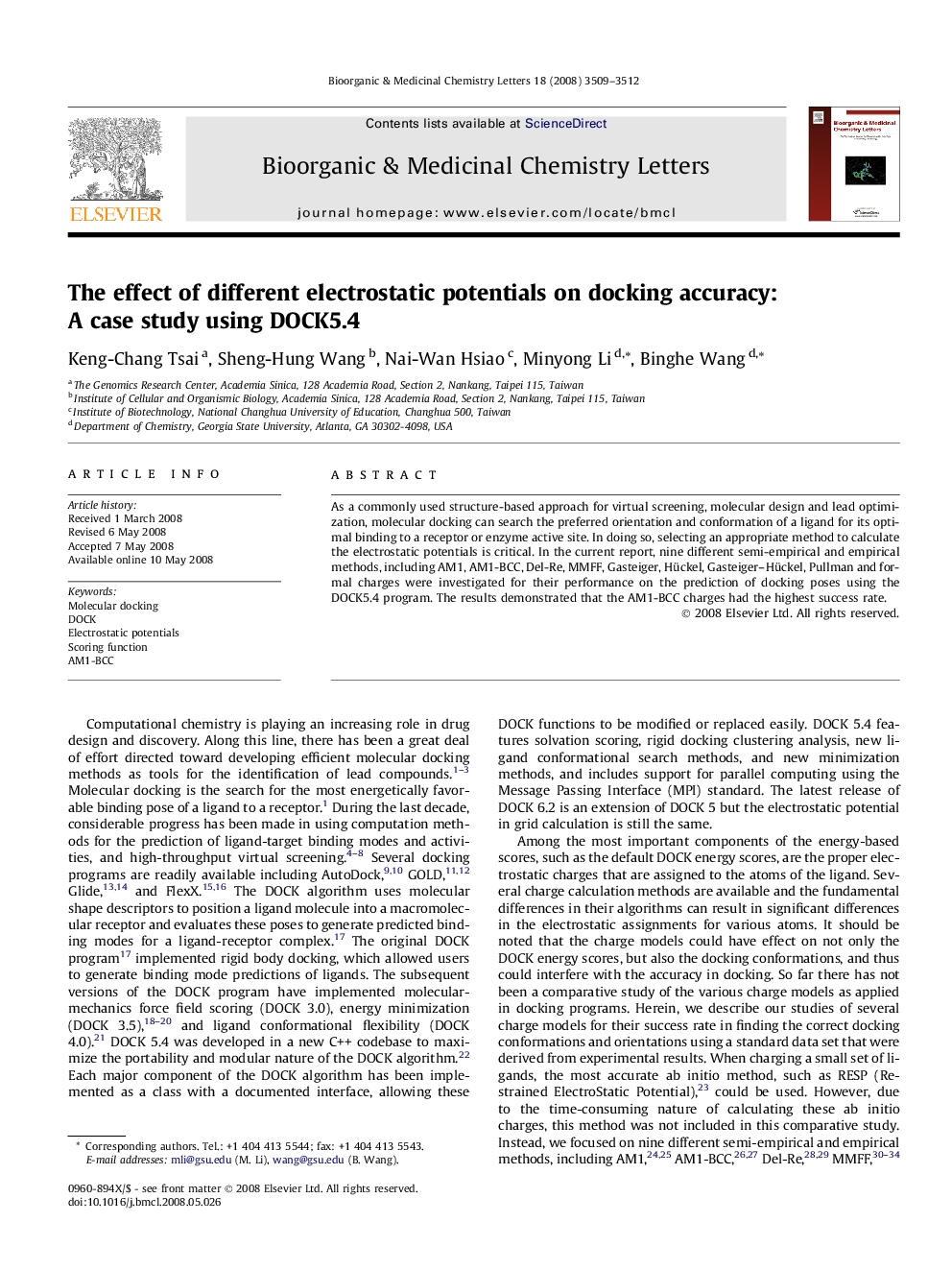| کد مقاله | کد نشریه | سال انتشار | مقاله انگلیسی | نسخه تمام متن |
|---|---|---|---|---|
| 1376334 | 981956 | 2008 | 4 صفحه PDF | دانلود رایگان |

As a commonly used structure-based approach for virtual screening, molecular design and lead optimization, molecular docking can search the preferred orientation and conformation of a ligand for its optimal binding to a receptor or enzyme active site. In doing so, selecting an appropriate method to calculate the electrostatic potentials is critical. In the current report, nine different semi-empirical and empirical methods, including AM1, AM1-BCC, Del-Re, MMFF, Gasteiger, Hückel, Gasteiger–Hückel, Pullman and formal charges were investigated for their performance on the prediction of docking poses using the DOCK5.4 program. The results demonstrated that the AM1-BCC charges had the highest success rate.
Nine different semi-empirical and empirical charges were compared their performance on the prediction of docking poses using DOCK5.4 program.Figure optionsDownload as PowerPoint slide
Journal: Bioorganic & Medicinal Chemistry Letters - Volume 18, Issue 12, 15 June 2008, Pages 3509–3512